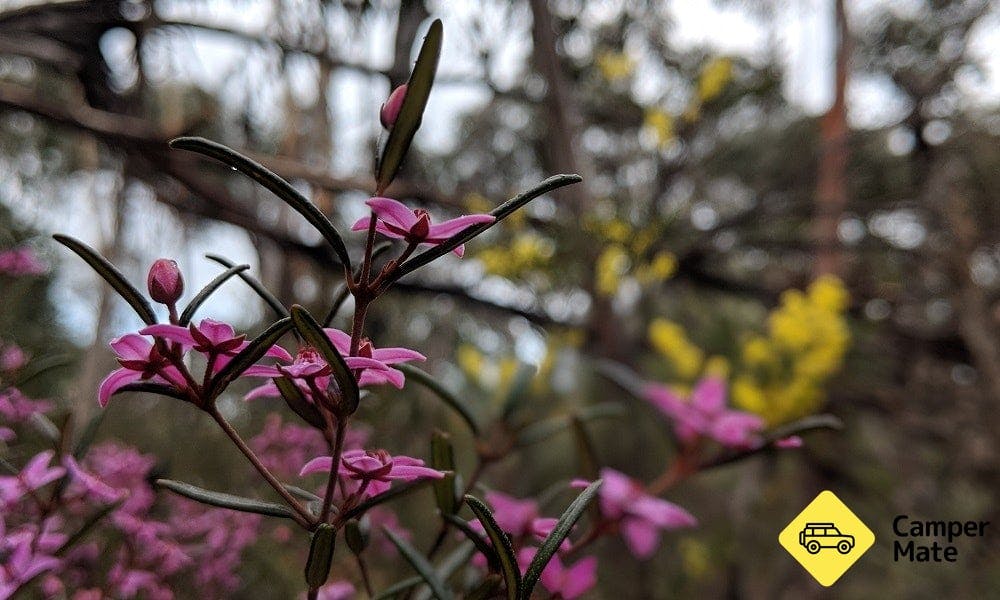
New South Wales
Lockleys Pylon Track: a walk in the wildflowers
September 25, 2018 • suzanne
6 min read
When we made a break for the Blue Mountains on a grizzly afternoon in late August, we had a modest summit and panoramic views in our sights. What we didn't expect was to stumble wind-battered and wet into a colourful wildflower corridor… and to linger there for some time, awestruck.
Lockleys Pylon isn’t like other walks in the Blueys. It doesn't plunge near-vertically into rainforest-filled gorges or turn your hammies into mincemeat. Instead, the 7km-return track cuts out across a ridge through alpine heath to a small yet spectacular summit, offering a rare combination of easy strides and killer views. Vast walls of golden sandstone and a blue haze of wooded plateaus rising from the valley is a pretty good prize for not a lot of puff, but on this occasion, it was the first signs of spring that stayed with us.
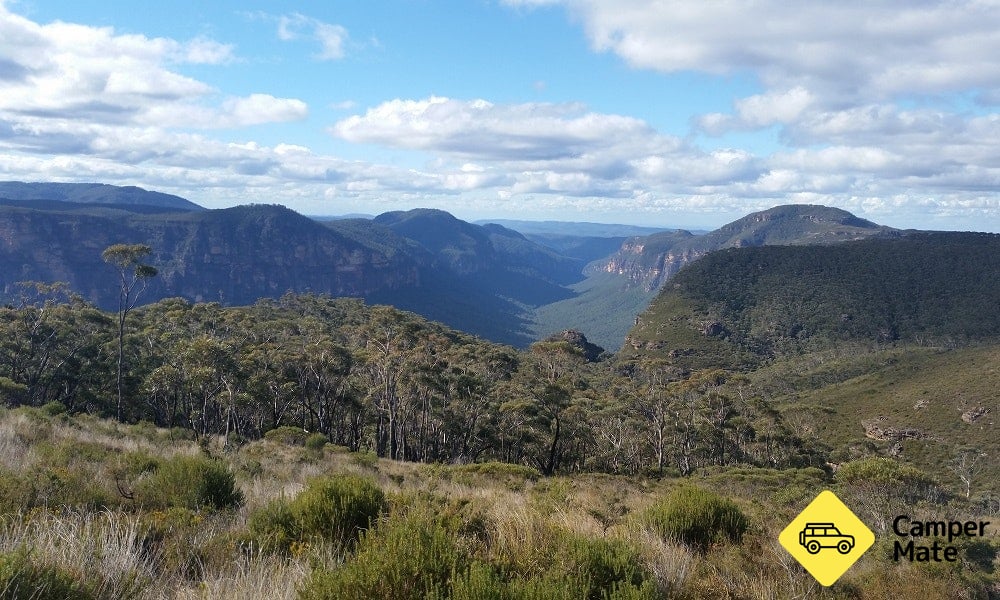
Lockleys Pylon is named after a journalist and conservationist who in the 1930s helped save a stand of magnificent Blue Gums from loggers. You can look down on the Blue Gum Forest in the valley hundreds of metres below.
Amazingly, we saw fewer than ten other people out there. Access via the Mt Hay management road might have played a part in that. And okay, the weather was touch and go. For 10km of unsealed yet 2WD-accessible fire trail, we steered delicately around ruts and potholes before pulling up in a space not too far from the track head. We were only minutes into the trail before steely clouds started closing in, ushered by a biting wind that pushed us sideways and almost made us turn back. But sometimes you've gotta ask: what are waterproofs for if not this? We don't regret the decision to cinch our hoods and tough it out.
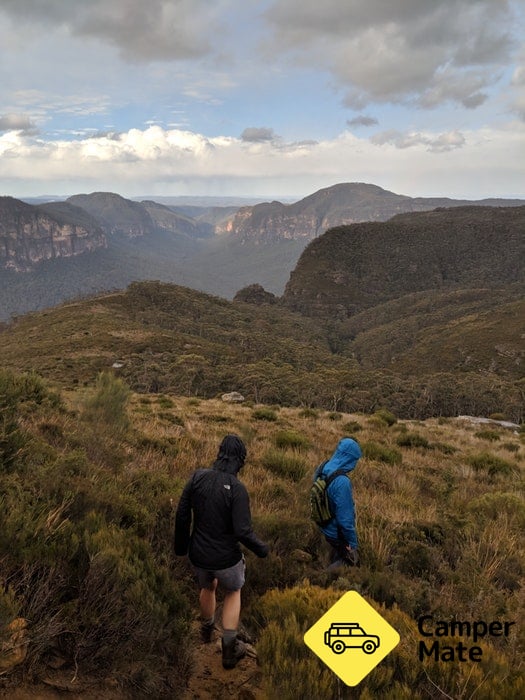
Purple Boronia and clusters of Sunshine Wattle had begun to bloom, and the blanket of heath sprinkled with tiny white flowers resembled something closer to an alpine meadow. We stop and start, stop and start, distracted every few metres by some new waxy leaf, squiggly bark, or spear of delicate pinhead-sized petals. Summit views are on the backburner as we silently plot a return trip, hoping to see Egg & Bacon and Mountain Devil adding flourishes of gold and crimson to the painting.
The wildflower display certainly surprised us, but why? How had we forgotten that Australia has the most varied, most unusual, and most colourfully-named flora in the world? Primary school lessons in floral emblems weren't that long ago, were they?
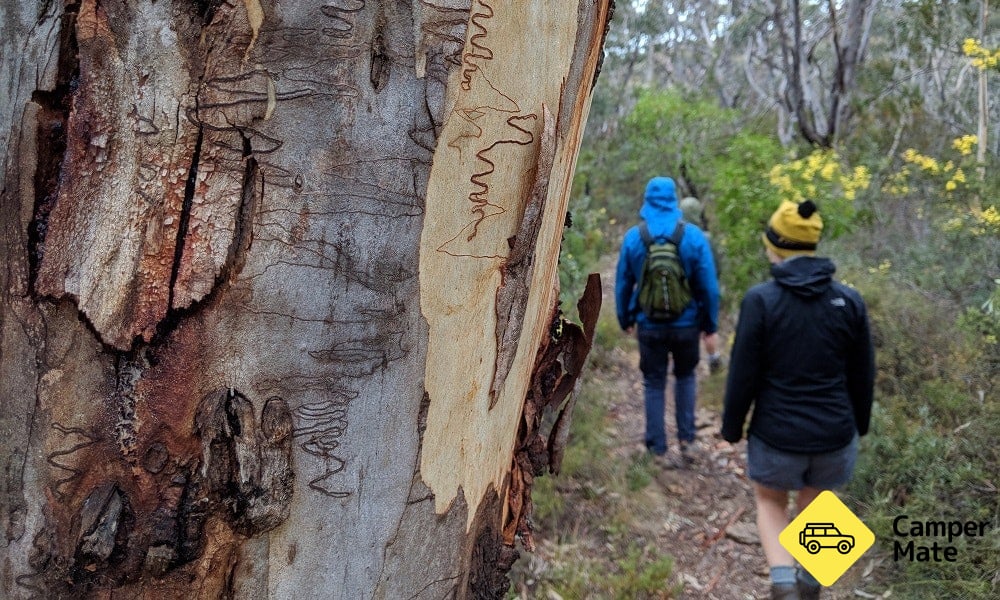
The Blue Mountains National Park has upwards of 1500 flowering plants, from abundant wattles, tea trees, boronias, banksias, grevilleas and heaths, to delicate irises and orchids that hide in the understorey and only reveal themselves to the sharpest of eyes. Even the most determined wildflower hunters might go decades without ever seeing the elusive pink flannel flower in bloom, which only unfurls its velvet petals after bushfire and rain.
Regeneration following devastation is the way of the bush, and testament to its ability to adapt to climatic extremes. But even the hardiest shrubs can be vulnerable. There are at least 30 local endemic plants listed as threatened in the Blue Mountains – a reminder that the first three rules of bushwalking in any dense vegetation (protected or not) should never, ever be flouted.
- Stick to the established tracks and foot pads to prevent trampling threatened shrubs and plants. Many native species grow from rock faces, so be sure to watch your step on cliffs as well as the ground.
- Don't pick the flowers or foliage. We wish we could say this is just common sense, but unfortunately, we did see at least one posy of boronia being taken home.
- Obey signs. Sometimes a circuit track needs to be walked in a certain direction to help isolate and prevent the spread of pests or disease.
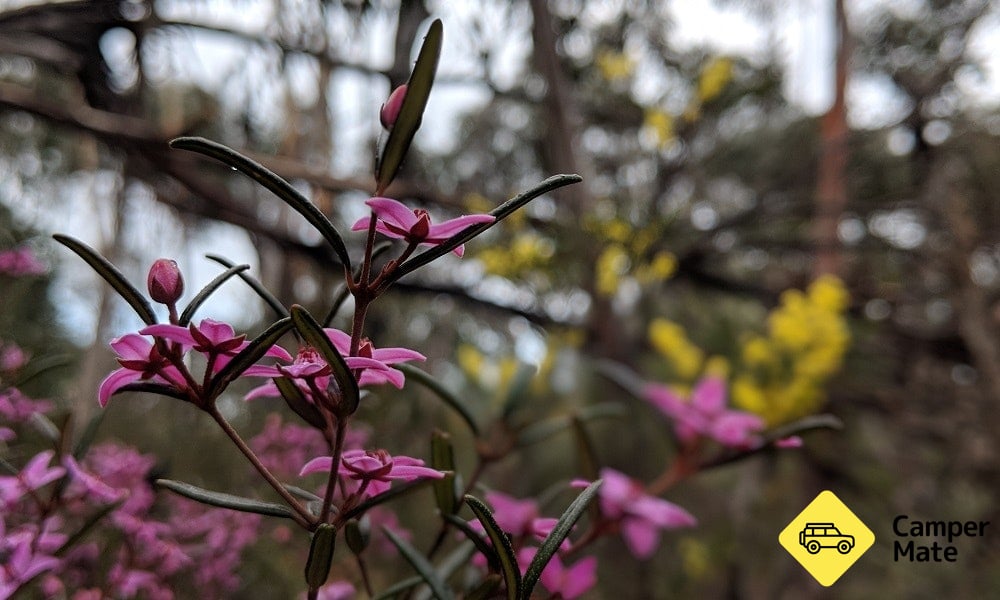
Boronia and wattle flowering in August
That the Blueys aren’t more famous for flora seems like a bit of an oversight, however they do go up against some big players. On an autumn overnighter in Kosciuszko National Park, the brittle, seeded heads of alpine daisies that covered the ground didn't escape our attention, and we made a mental note to come back in summer to see the alps a sea of colour.
Victoria is known generally as the garden state, so for the Grampians to claim the title of ‘Victoria’s Garden’ you’d be right to expect something pretty special. More than a third of the state’s native flowers call the Grampians home, with Tinsel Lilies, Grampians Heath, Moss Flowers and countless native orchids all playing a role in outshining the park’s exquisite views and tumbling waterfalls (which is no small feat).
But mention wildflowers and Western Australia almost always springs to mind first. The first of the state’s 12,000 species begin to bloom as early as June, kicking off a six-month-long tidal wave of colour that sweeps down the desert from the north and finishes up down south in November. More than half of WA's native flowers grow nowhere else on the planet, and just to top it off, they’re easy pickings. Vast meadows of desert daisies creep right up to the roadside, turning highways into some of the world’s finest wildflower trails.
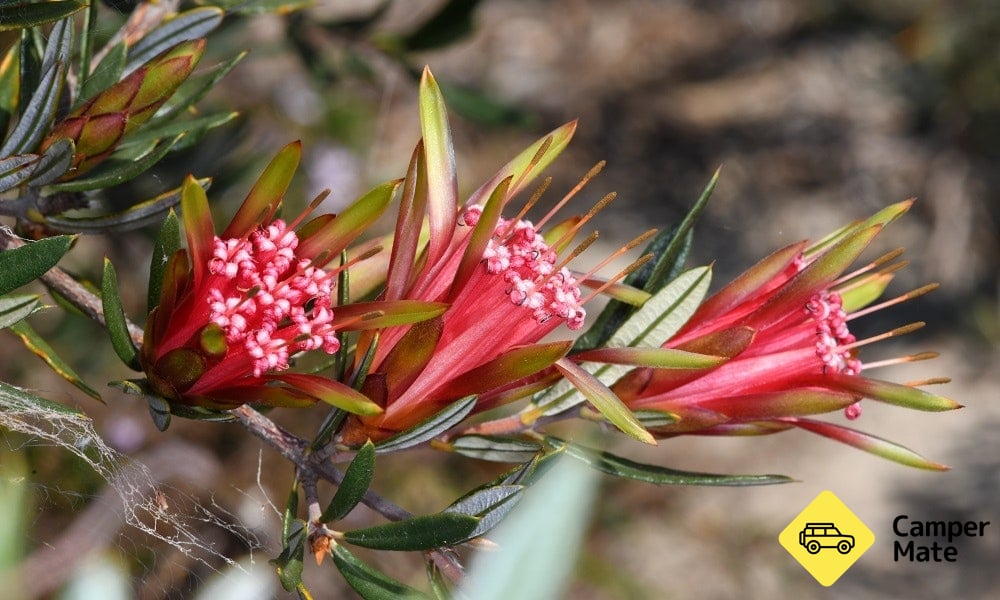
Come Christmas the colourful lambertia, commonly known as Mountain Devil due to the shape of its seed pods, will be blooming in the Blue Mountains.
WA is a worthy winner if for no other reason than its incredible ability to hatch life from such dry, hostile earth. But we will always stand by our storm-battered yet blossoming ridge in the mountains. As droplets cling to the foliage and make the wildflowers glisten, as the sky throws an atmospheric veil over Mount Banks and Mount Hay, and as a rainbow shoots from a sudden break in the clouds, it’s hard to imagine anywhere more magical. The rumble of thunder as we hurry back through a sudden gust of sleet just seems to amplify the excitement, and we end our walk feeling strangely buzzed if a little damp.
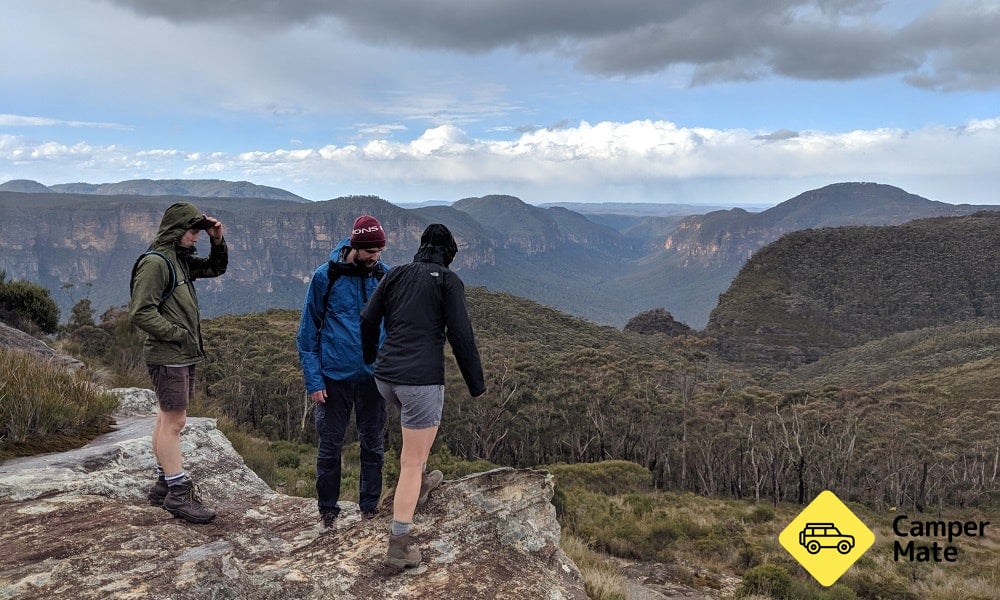
A landscape of sandstone and plants shaped by varying levels of exposure to the elements.
Getting there: Take the Mount Hay Road in Leura for 10km, and look out for signs to the track head. The road is an unsealed management road, which can be steep and potholed but is still driveable by 2WD cars.
Distance: 7km return
Track conditions: Well-formed, narrow at times and mostly flat. A short climb to the pylon is the only uphill section. Look for faint foot pads branching off the main trail that lead to rocky outcrops with awesome views.
Tip: The track can be overgrown with prickly bushes, so wear long pants unless you want to go home with battle scars (as we did).

